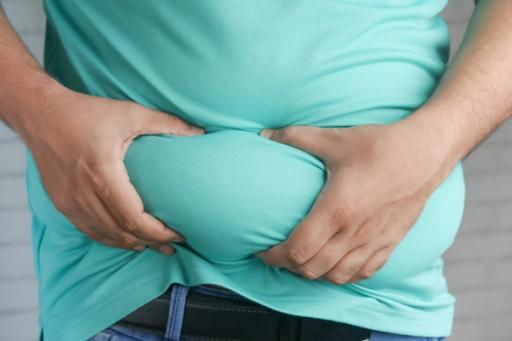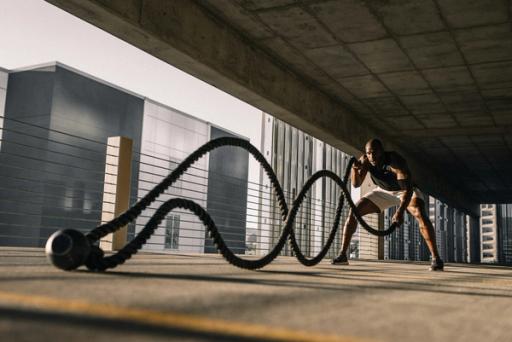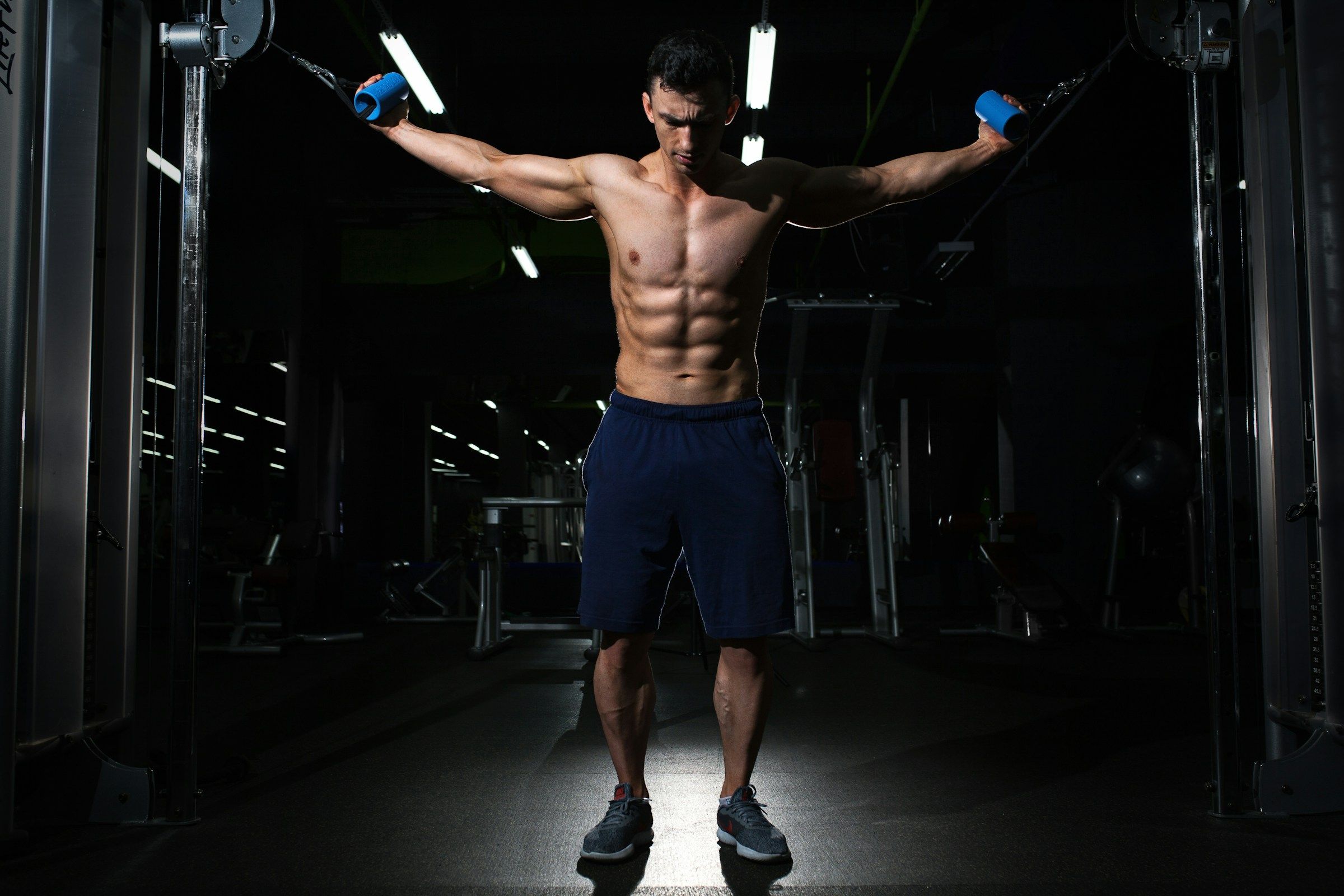Have you ever wondered how many calories you should burn daily to meet your fitness goals? With so much conflicting advice online, it can be challenging to determine exactly where to start. For example, if you want to lose weight, how many calories should you burn daily to achieve your target? If you’re going to get fit and improve your endurance, how many calories should you burn a day to reach your goal? Understanding how many calories you should burn daily can help you develop a more brilliant workout plan targeting your objectives. This article will help you determine how many calories you should burn daily based on your goals and outline practical strategies to reach this number. So, how are calories measured?
Goldi AI’s intuitive calorie tracker can help you implement user-friendly and practical strategies to understand how many calories to burn daily and reach your fitness goals.
How Many Calories Should I Burn A Day?

Caloric needs vary by individual and can change based on specific goals. For example, a more prominent person generally needs more calories to maintain their body weight than a smaller person.
Caloric needs also depend on multiple factors, including:
- Gender
- Age
- Body size
Understanding your caloric needs is crucial if you want to know how many calories you should burn a day to reach your health goals.
Total Daily Energy Expenditure (TDEE): The Basics
Total daily energy expenditure (TDEE) is the total calories your body burns daily. TDEE includes the energy used at rest for critical processes like:
- Breathing
- Circulating blood
- Heart function
This is your basal metabolic rate (BMR), which accounts for 60-70% of your daily energy needs. While your BMR measures your needs, your resting metabolic rate (RMR) measures how many calories your body burns at rest.
What Affects BMR?
Several factors impact your BMR, including:
- Age
- Muscle mass
- Pregnancy status
- Diet
For example, your BMR drops by 1-2% per decade after age 20. This is primarily due to age-related muscle loss. Your total daily energy expenditure also includes the calories burned through thermogenesis—known as the thermal effect of food (TEF)—and the energy you use during physical activity.
TEF: The Thermic Effect of Food
TEF, or thermogenesis, is your body’s energy to digest and process foods and drinks. It accounts for around 10% of your total daily energy expenditure. Some foods require more energy to digest than others.
- Protein has the highest TEF of the three macronutrients, 20-30%, meaning the body uses 20-30% of protein’s calories to digest the food.
- Carbohydrates have a TEF of 5-10%, and fats have a TEF of 0-3%, meaning you keep more calories from these foods.
For this reason, following a high-protein diet can help you burn more calories daily. The rest of your daily calorie needs come from your level of physical activity, such as exercising and walking. A person who regularly exercises and has a physically demanding job will have much higher calorie needs than a person who lives a sedentary lifestyle.
How To Calculate Calorie Burn
If you’re trying to figure out how many calories you should be burning daily to lose or gain weight, you’ll first need to determine your daily calorie needs. The most accurate way to determine your RMR (how many calories your body burns at rest) is to visit a healthcare center that offers direct or indirect calorimetry.
Direct calorimetry measures how much heat your body produces over a set period, while indirect calorimetry measures oxygen consumption during a defined time. While these tests are accurate, most people cannot access them. Another way to estimate your calorie needs is the Mifflin-St. Jeor equation calculates your daily calorie needs by calculating your:
- Height
- Body weight
- Activity levels
The Mifflin St. Jeor Equation
Using the Mifflin St. Jeor Equation, you’ll plug in your height, weight, and age to determine your calorie needs. Here are the equations for men and women: Men: Calories per day = 9.99(weight in kilograms) + 6.25(height in centimeters) –4.92(age) + 5 Women: Calories per day = 9.99(weight in kilograms) + 6.25(height in centimeters) – 4.92(age) -161 You’ll multiply this answer by an activity factor representing your daily activity levels. Activity factors are as follows:
- Sedentary: x 1.2 (sedentary)
- Lightly active: x 1.375 (light exercise less than three days per week)
- Moderately active: x 1.55 (moderate exercise most days of the week)
- Very active: x 1.725 (challenging exercise every day)
- Extra active: x 1.9 (strenuous exercise two or more times per day)
This answer represents your daily calorie expenditure. Remember, this is an estimation and not exact.
What Are the Average Caloric Needs by Age and Gender?
Due to their larger body size and greater muscle mass, men generally require more calories to maintain their body weight. According to the Dietary Guidelines for Americans, moderately active men and women ages 19-60 typically require 2,400-2,800 and 1,800-2,200 calories daily, respectively. Women over 60 require 1,600-2,200 calories daily, while men over 60 need 2,000-2,600 calories daily to maintain weight.
Calculating Your Goals
For Weight Loss
If you’d like to lose weight, it’s generally recommended that you decrease your calorie intake and increase your energy output to create a calorie deficit. This will facilitate fat loss. Choosing a safe and realistic plan is essential if your goal is to lose weight. Most health organizations and medical experts recommend a monthly weight loss goal of 1-2 pounds (0.45- 0.9 kilograms) per week or 4-8 pounds (1.81-3.6 kilograms).
While this may seem small, research shows that making more minor adjustments in your calorie intake may help you keep weight off long-term. This method can also prevent compensatory changes associated with very low-calorie diets that make weight loss more challenging to maintain, such as:
- Loss of muscle mass
- Increased appetite
- Reductions in RMR
Factors Affecting Your Weight Loss Speed Beyond Calorie Deficit
Creating a calorie deficit of around 500 calories generally equates to a weight loss of about a pound a week or 4 pounds (3.6 kilograms) a month. You can achieve this deficit by eating slightly fewer calories and increasing your activity levels through exercise.
Everyone is different, and people may lose weight slower or faster depending on:
- Underlying health conditions
- Genetics
- Other factors
For Weight and Muscle Gain
If you need to gain weight, you must increase your calorie intake. This could involve eating an extra meal or snack daily while keeping your energy output the same. For people who want to build up muscle mass while maintaining:
- Their weight
- Increasing their protein intake
- Resistance training can help
Measuring Your Daily Activities
It’s unnecessary to track your daily activities, but knowing how many calories you burn while exercising can help determine your daily calorie intake goals. Many use activity trackers like Fitbits or Apple Watches to track energy expenditure.
Research shows that while these devices are accurate for tracking step count and heart rate, they are inaccurate for estimating energy expenditure. Keeping track of your steps is a great way to monitor your energy output. Although calorie burning varies, you generally burn around 1 calorie for every 20 steps. This means walking 8,000 steps would burn about 400 calories.
Calories Burned by Exercise Type
Many people think they must exercise hard to burn calories throughout the day. While exercise burns many calories, your body also burns calories as you do daily tasks. How much you burn has to do with how much you weigh.
For example, people may burn close to the following in 30 minutes of doing these tasks based on their weight:
Calories burned in 30 minutes
A 125-lb (56.7-kg) person burns:
- 150 calories walking at 4.5 mph or cleaning the gutters
- 135 calories mowing the lawn, gardening, washing the car, or walking at 4 mph
- 120 calories walking at 3.5 mph or playing with the kids (moderate activity)
- 105 calories grocery shopping with a cart
- 75 calories cooking
- 49 calories sitting in meetings
- 45 calories doing light office work
- 41 calories doing computer work
- 38 calories standing in line
- 34 calories reading
- 23 calories watching television
- 19 calories sleeping
A 155-lb (70.3-kg) person burns:
- 186 calories walking at 4.5 mph or cleaning the gutters
- 167 calories mowing the lawn, gardening, washing the car, or walking at 4 mph
- 149 calories walking at 3.5 mph or playing with the kids (moderate activity)
- 130 calories grocery shopping with a cart
- 93 calories cooking
- 60 calories sitting in meetings
- 56 calories doing light office work
- 51 calories doing computer work
- 47 calories standing in line
- 42 calories reading
- 28 calories watching television
- 23 calories sleeping
A 185-lb (83.9-kg) person burns:
- 222 calories walking at 4.5 mph or cleaning the gutters
- 200 calories mowing the lawn, gardening, washing the car, or walking at 4 mph
- 178 calories walking at 3.5 mph or playing with the kids (moderate activity)
- 155 calories grocery shopping with a cart
- 111 calories cooking
- 72 calories sitting in meetings
- 67 calories doing light office work
- 61 calories doing computer work
- 56 calories standing in line
- 50 calories reading
- 33 calories watching television
- 28 calories sleeping
Increasing activity levels can help you build muscle mass and lose body fat. Gaining muscle mass can increase your RMR, which enables you to burn more energy while at rest.
A recent study found that a 2.2-pound (1-kilogram) increase in muscle mass can increase RMR by 24 calories daily. Maintaining muscle mass as you age can also help you maintain a healthy body weight and negate age-related changes in RMR.
Ways to Burn More Calories Every Day

If you’re trying to lose weight or body fat by burning more calories, it’s best to use safe and effective methods. Here are a few tips to effectively increase calorie burning:
Be more active. Consider adding more steps to your day or trying a new exercise program to burn more calories. Any kind of physical activity uses energy. The more work the activity takes, the more calories you burn. Even fidgeting burns more calories than sitting still.
Everyday Activities to Boost Calorie Burn Without Hitting the Gym
Here is a comparison of different activities and the number of calories a 170-pound (77 kilograms) person can burn in an hour.
- Standing burns more calories than sitting (186 calories vs. 139 calories).
- Walking at a moderate pace burns more calories than standing (324 calories vs. 186 calories).
- Walking briskly burns more calories than moderate-paced walking (371 calories vs. 324 calories).
Look for ways to be more active every day. Even small changes, such as standing instead of sitting while on the phone, can burn up to 100 calories a day or more. Start with the suggestions below and come up with your ideas.
Always talk to your healthcare provider before starting a new exercise program, especially if you are not exercising regularly.
Ways to Move More
Stand Up
Standing causes extra work for the muscles in your back and legs.
How to:
- To burn even more calories, pace back and forth while you talk on the phone.
- If you have a desk job, see if you can get a standing desk or rig one up and spend part of the day standing while you work.
Take Regular Breaks
People who often take breaks from sitting burn more calories than those who sit in one place for hours. Just getting up for a quick stretch will break up your sitting time.
Walk More
Several ways to walk more:
- Walk to the bathroom on the other end of the building.
- Park at the far end of the parking lot.
- Get off the bus or subway several stops ahead and walk the rest.
Always be on the lookout for ways you can add more walking to your life.
Stand On One Foot
How to:
- While standing, lift one foot an inch (2.5 centimeters) off the ground, see how long you can hold that position, then change feet.
- You will work your leg muscles and core muscles and improve your balance.
- Put on your shoes while standing up. This is another great exercise for balance. See if you can put on my sock and shoe and tie my shoe without letting my foot touch the ground.
Be In A Hurry
Walking fast burns more calories than a stroll. Make a game by seeing how quickly you can reach your destination.
Take The Stairs
If you have to get to the 11th floor, walk up as many flights as I can, then take the elevator the rest of the way. Stair climbing is one of the most leisurely activities I can do to burn calories without going to a gym.
Plan Active Parties
If you have guests over for a BBQ or dinner party, start the evening with a game of volleyball, badminton, or an active video game. Make social events active by meeting to go bowling, throw darts, or play pool.
Wear A Tracking Device
Wearable activity monitors or smartphone apps can tell you how active you have been on a given day. Set a daily goal for yourself, or get a friend to join you in a friendly competition. Seeing how adding extra activities to your daily results can inspire you to do even more.
Add Music
Listening to music while you walk can make the activity more fun and take your mind off what you are doing. Pick an upbeat tune, and you may up the intensity of walking without realizing it. Watch less TV. Television remains one of the biggest draws for sitting marathons. If you are hooked on a particular show, tune in and hit the off button as soon as my show ends.
You could also try standing up while you watch or doing pushups, crunches, or squats every time a commercial comes on. Only allowing yourself to watch my favorite show at the gym can help motivate you to get in my workouts.
Do Your Shopping In Person
When you physically go to a store to shop, you walk to the building, take the stairs, walk the aisles, reach for things, and lift and carry bags. Compare that to the tiny movements involved in online shopping.
Do It Yourself
Prepackaged foods, snow blowers, riding mowers, and other conveniences are all great time-saving inventions. But as things get easier, balancing the calories I eat with the energy I use becomes harder.
Cooking from scratch, cutting the grass with a push mower, and shoveling the walk all require movement. The more you move, the more calories you burn and the healthier you will be.
Eat More Protein
Following a high-protein diet can help you burn more calories, as protein takes the most energy to digest. Protein also helps you feel more satiated after eating, which can help curb your appetite.
Add Resistance Training
Developing a resistance training program, such as a weightlifting routine, can help you gain muscle mass associated with a higher RMR.
Follow a Healthy Diet
Following a well-rounded diet high in whole foods and cutting back on foods known to cause weight gain, such as added sugars and fast food, can help you stay within your set calorie range. If you’sre unsure how many calories I should eat daily, consider consulting a healthcare provider, such as a registered dietitian. They can answer questions and help you develop a safe and effective weight-loss plan.
Do Men Burn More Calories Than Women?
Yes, men and women burn calories at different rates. This is why sex is included as a variable in the equation, along with age and weight, which also affect the number of calories a person burns.
- Men generally have less body fat than women. They also typically have more muscle mass, which means their bodies burn more calories at rest.
- Men generally burn more calories than women overall.
A person’s body composition plays an important role, as do hormone levels.
Track Your Calories within Less Than 15 Seconds with Our Calorie Tracker App
Goldi AI transforms calorie tracking with cutting-edge AI technology. Just snap a photo of your meal, and we’ll do the rest.
Our app combines your phone’s depth sensor with advanced AI models to:
- Analyze food volume
- Identify ingredients
- Instantly calculate calories, protein, carbs, and fat content.
With 90% accuracy on visible foods and multiple tracking options like:
- Barcode scanning
- Food label recognition
- Manual descriptions for complex items like smoothies
We’ve made nutrition tracking effortless. Whether you’re scanning a full meal or a quick snack, Goldi AI
- Provides nutritional information in under 15 seconds
- Eliminates the need for tedious manual logging.
Our AI learns from your feedback to improve accuracy. It includes personalized insights and smart reminders to keep you on track. Goldi AI makes achieving your fitness goals simpler than ever. Track your calories with your camera using Goldi AI’s calorie tracker today!



